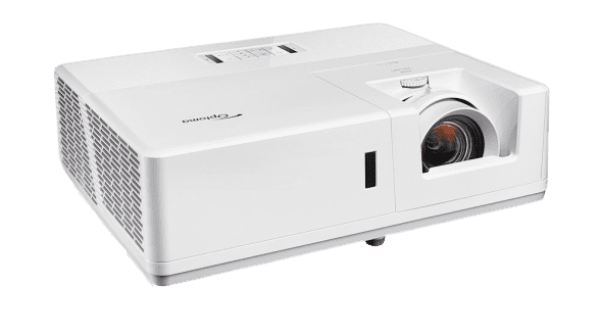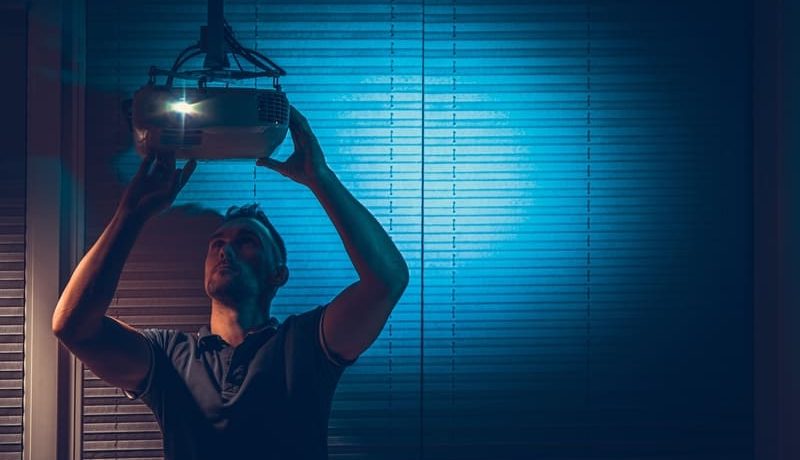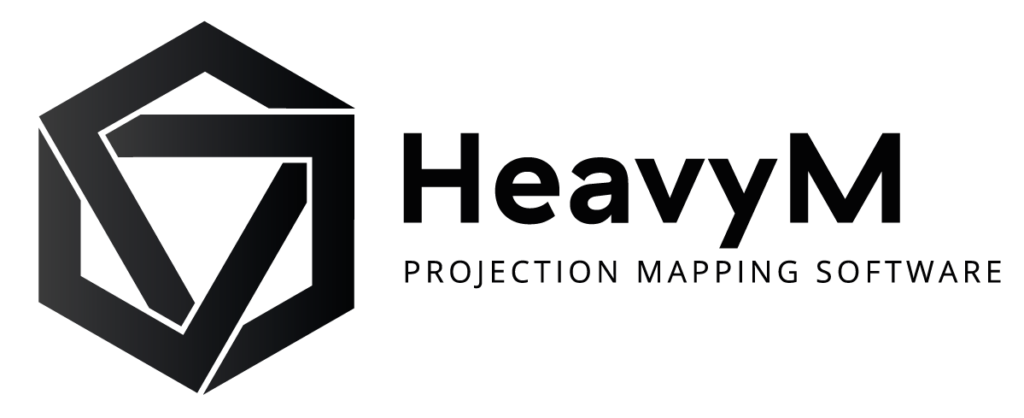Le Petit Chef: how to integrate your mapping restaurant installation?
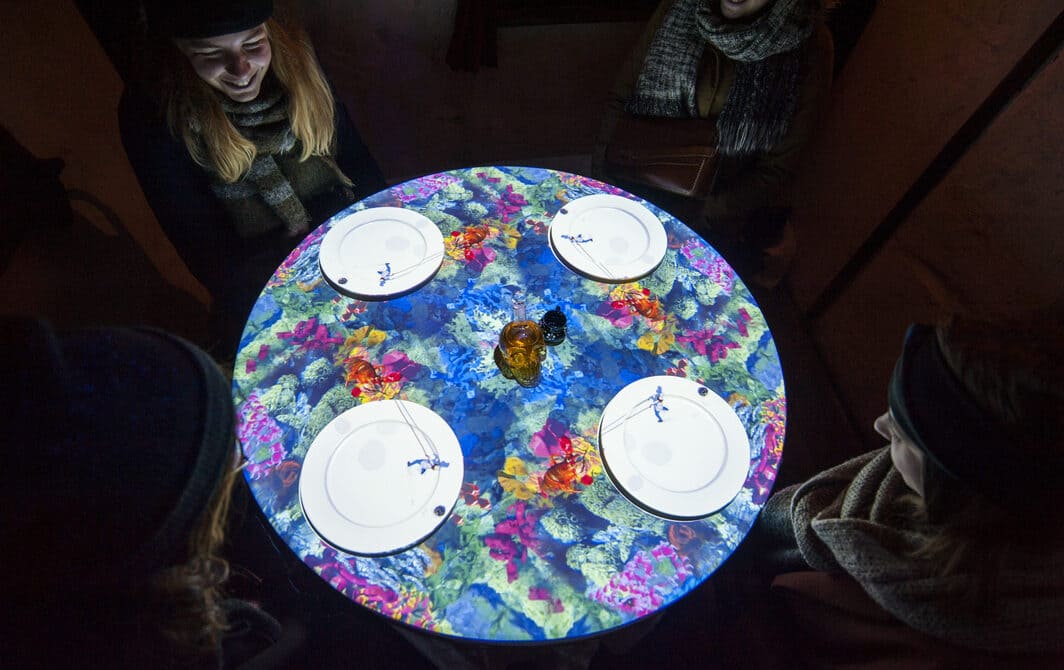
You’re sitting at your table, the order is placed, but your dish doesn’t arrive… A simple way to wait would be to scroll on your smartphone. But there is another way: projection mapping!
When we talk about video mapping, the first image that comes to mind is usually a projection on a building facade. The public loves monumental projection because it completely transforms everyday spaces. Buildings and monuments that are usually inanimate are turned into a magical universe.
It is quite possible to reproduce this enchantment in interior spaces, and more particularly in restaurants. Say hello to “mapping restaurant” and it is the big trend of the moment.
But how does it work? How much does it cost?
Examples of mapping restaurant
Le Petit Chef
Since 2015, an animation for restaurants is making a real buzz on Youtube. It is the project Le Petit Chef which is a hit with more than 10 million cumulative views at the moment. The Skullmapping studio founded by artists Filip Sterckx and Antoon Verbeeck has created an immersive visual experience that is experienced while sitting at a restaurant table.
The narration is thought around the dishes you are going to taste: a small cook realizes in front of you the different operations in order to prepare your meal. The adventures lived by the cook are reminiscent of a tale, without being fantastic and remaining accessible to all audiences.
If you want to live the experience, 35 restaurants in the world offer it. Find all the addresses and book your table on the Petit Chef website.
Pulse Middle East
Another remarkable achievement is the Pulse Middle East project for the Puerto 99 restaurant in Dubai. In addition to projecting animations on the tables, the guests browse the menu on a tablet and see the dishes directly on their plates!
The audiovisual system allows the restaurant staff to easily control the video, light and sound to perfectly match the atmosphere of the evening. It is even possible to display personalised text on the tables, in the case of a birthday party for example.
Elyséum
The projection mapping on all the walls of the restaurant completely immerses the spectator in virtual environments. The experience is less personalised than in the case of a projection on the table, but it is much more immersive.
How to create a mapping restaurant?
The first topic that needs to be covered is content and message. What do you want to project? What experience do you want to convey? These questions are fundamental for the next step, because their answers will give the guideline of your project. Indeed, the visual animations must be in line with your image and your customers.
Depending on the level of immersion expected, several solutions are available to you. The most basic but also the most accessible is to use existing visuals in image banks. The most complex, and the most impressive, is to produce entirely custom visuals.
For example, for Le Petit Chef, the mapping visuals produced by the Skullmapping studio are entirely designed to be projected on a restaurant table. The artists master illusionist techniques, such as anamorphosis, to play with depth, light and volumes. The visual effect is amazing because you have the impression that the elements of the story are real and come to life before you.
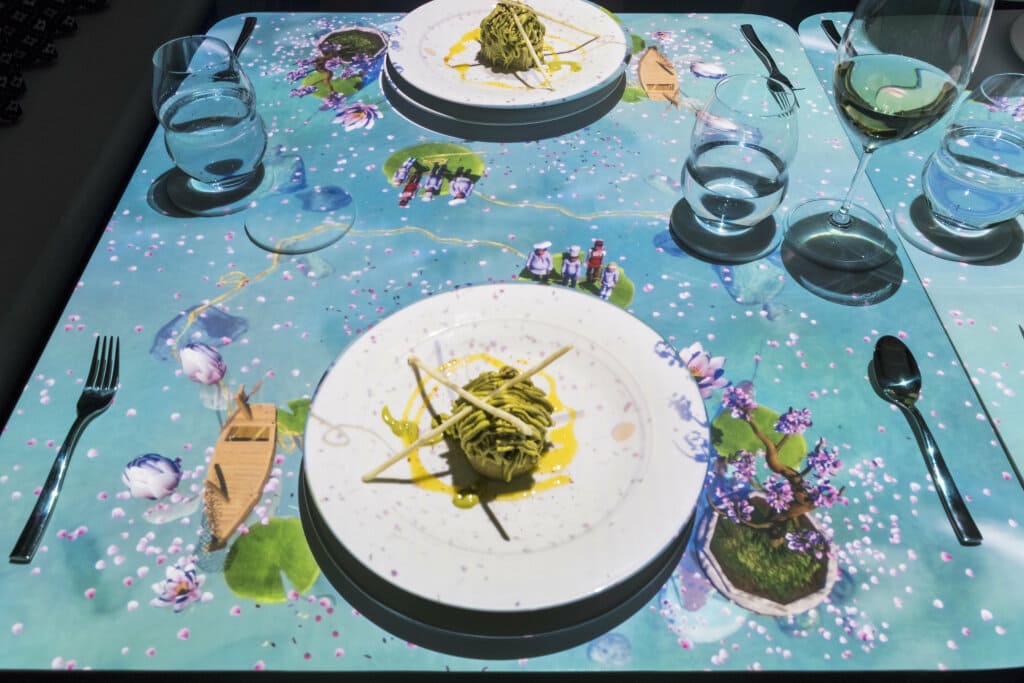
Now let’s talk about the technical part. Despite all its advantages, video projection has several constraints:
The light must be controlled: you cannot consider projection in broad daylight for example. You must therefore control the light of the restaurant in which you intend to deploy a projection mapping system. The light power of the projectors must be calculated to guarantee an optimal quality of rendering.
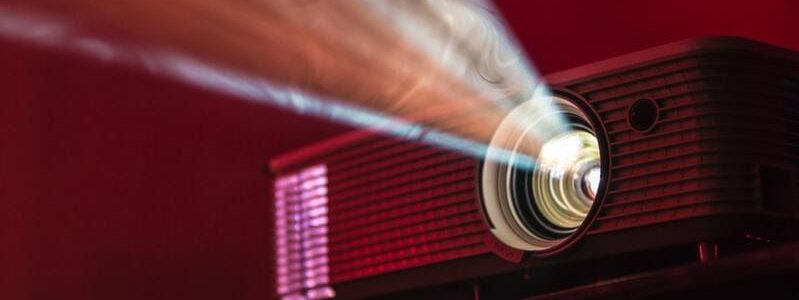
The positioning of the projectors must be carefully studied. The size and location of the projected image will determine the position of the projectors. They must be discreetly integrated in the place, in order to produce a magical and surprising effect.
The projected shadows can be disturbing: when people are moving around or making movements. You must anticipate the possibilities of movement to avoid shadows.
To help you in the choice of the material and in its use, we produced articles :
To control the projectors, you need one or several computers. The design of the computer system depends on many parameters such as the number of projectors, the total resolution, the desired experience and the control possibilities.
The installation of a mapping restaurant requires powerful computers, which are called “media servers”, to be able to broadcast the video to the right places. As for the projectors, it is necessary to foresee a place to integrate them discreetly in your place.
Finally, as the conductor of the hardware part, one or more projection mapping software are implemented to control the installation. There are several of them and the choice depends once again on the result you wish to obtain.
With HeavyM software, it is very easy and quick to get a result. This is what MAD Studio, a creative agency based in Geneva, Switzerland, has done. The studio proposes a visual animation of mapping on the tables of a restaurant. The studio created these custom video contents that take into account the position of the objects to give them life.
The projected visuals are created in advance with motion design software, such as After Effect or C4D. They are then imported into HeavyM and mixed with the built-in effects library.
With HeavyM, you get the easiest software to import, play and warp your content to fit the environment.
HeavyM makes it easy to create video mapping projects. This technology is no longer reserved for video projection specialists. It’s now just a click away and can even be found on your plate!
The cost of a mapping in a restaurant
The contents
The production of entirely customized visual animations requires time. Even more so if the visuals are in 3D, like for Le Petit Chef. Count on a budget of about 50€ to 500€ per second, depending on the technical difficulty.
More affordable animations can be found on image banks. The qualities are very variable and the prices can go from a subscription of 20€/month for a complete access to the bank, to 20€/second for a single purchase.
Video projectors
If you want to project on the walls, it is necessary to use medium power projectors, between 5000 and 15000 lumens. An estimated cost can be around 1€ / lumen on this kind of model.
To project on tables, low power models below 5,000 lumens may be appropriate. Count about 2000€ per projector.
The computer system
High-end solutions of the “media server” type are generally evaluated at 3000€ per video output associated with a projector. These solutions are based on reliable and powerful hardware, associated with software specially designed and tested for these applications.
More affordable solutions can be considered and can allow you to get down to around 1000€ per video output, with the software included. However, they will not be able to meet all needs and the size of your installation will be limited.
Design and integration
To ensure an optimal and aesthetic result of the mapping in your restaurant, we advise you to solicit a professional in audiovisual integration. His job is to study the cabling, the power supply, the projectors hanging, to set up the system and to maintain it. The cost will still depend on the complexity of the installation but a commonly accepted order of magnitude is around 1000€ per day of intervention.
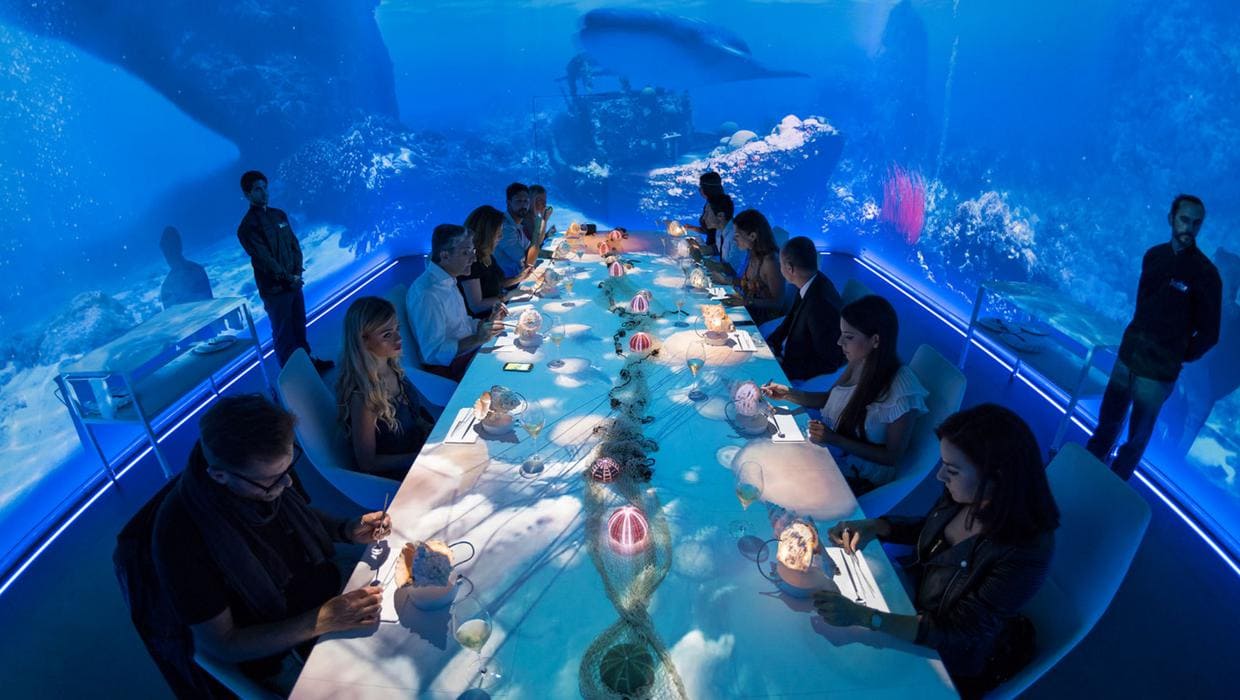
Conclusion
Finally, mapping restaurant is now possible! Several establishments in the world have bet on this technology and this is only the beginning. This innovation is going to spread and we are convinced that more and more projects will emerge in the coming years.
Video projection and more particularly projection mapping requires material and consequent resources if you want to guarantee a result that meets your expectations. If you define your expectations correctly and if you are accompanied by specialists, you will obtain the wow effect that your guests will remember.
If you are also considering equipping your restaurant with video mapping, we propose to study the possibilities with you.

